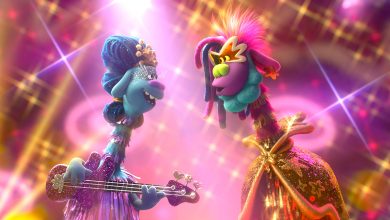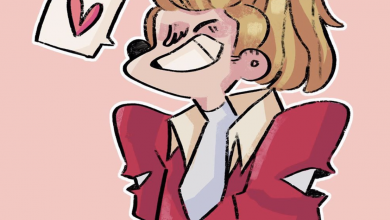Eurovision and Lies We Tell Our Children

The Eurovision Song Contest, for those who don’t know, is an international treasure, being aired for the first time in the US (today, on Logo TV). It’s when approximately forty countries, mostly from Europe, get together to show off catchy beats, sparkly costumes, national languages (or interesting choices in English lyrics), propaganda, and, in Russia’s case, advice for how the world can just get along. Almost as dramatic as the songs themselves is the voting, which is essentially an international soap opera. Despite all of that, most of my European friends and family think the ESC is hopelessly lame. I love them dearly, but their opinions are 100% wrong on this.
Now that this year’s contest is upon us, I’ve been reacquainting myself with songs from previous years. Eurovision 2014, held in Copenhagen, brought us sexy butter churning and Conchita Wurst, but it also brought us Pollapönk. who are a band made up of Icelandic teachers, or possibly a sentient box of crayons.
Pollapönk’s song, “No Prejudice” is a cheerful, earwormy piece with social justice aspirations. Watch/listen for yourself:
I like it. I think it’s cute. But I’m still going to blast it with my Feminist Overthinking Ray. Let’s look at the lyrics.
Life is way too short for short-sightedness
and tell me who has got the time
for narrow-mindedness
Eh, so far, so good.
Listen to what I say
cause every-b-b-b-b-b-b-body
looks the same on the inside
Here’s where I start to have a problem, and it’s not something I can blame on Pollapönk or anyone in particular. It’s bigger than that.
I’ve been learning that “everybody looks the same on the inside” for as long as I can remember, and it’s only in the past few years that I’ve realized what a terrible lesson it is. My understanding of it is that since we’re all the same on the inside, we shouldn’t treat anyone poorly based on external characteristics, because inside, they’re like us. Okay. But what about, I don’t know, just not treating people poorly? Shouldn’t that be the goal, regardless of one’s insides? Especially when you consider that we’re not really much more alike internally than we are externally.
Let’s take an example from the song.
Even if you’re taller
Or someone who is smaller
Or perhaps you’re thinner
Or one who loves his dinner
Listen to what I say
’cause every-b-b-b-b-b-b-body
looks the same on the inside
First of all, I’m going to forgive the reference to the “fat people do nothing but eat, skinny people hate food” stereotype, since it’s for rhyming purposes (and because it’s mild… that excuse doesn’t fly when you’re rhyming with “runt” or “digger” or “gag” FYI). Anyway, here we learn that tall people, short people, fat people, and thin people look the same on the inside. Are you wondering how that’s possible? Let’s do a science experiment.
Take a two-liter bottle of soda and an empty 20 ounce bottle. Stand in a room with white carpeting. Open the two-liter bottle and empty it into the 20 ounce bottle. Just keep pouring. Now go buy a new carpet, because, as it turns out, something that is taller and something that is smaller are not the same on the inside. Of course, bodily differences aren’t limited to volume…someone who appears to “love his dinner” might have a thyroid problem and eat only because he has to, preferring to spend his time, say, organizing his antique postcard collection. Barring x-rays, colonoscopies, or exploratory surgery, you just don’t know what people are like on the inside.
The song never directly addresses anything other than height, weight, and stuttering, but, considering the traditional Voldemort complex (“let’s talk about it in a way that allows us to not talk about it”) surrounding the topics of race and sex/gender, let’s assume they’re talking about those as well. Now, my understanding of biology is not the most advanced, but I’m going to go out on a limb and say that things look pretty different when it comes to the presence or absence of ovaries and a uterus. Even within our brains, where our personalities reside, there’s so much variation, whether it’s due to a tumor or neurological disorder or everyday individual differences. (In fact, stutterers don’t exactly look the same on the inside.)
Look, I understand that there’s no way to fit a nuanced family-friendly treatise on all types of discrimination into a three-minute pop-punk song. Fortunately, we have much more than three minutes to talk to our kids, so we don’t have to settle for shortcuts. They need to know that we don’t treat people well because underneath all of those pesky differences, they’re just like us, in that they have a beating heart and also probably some bones—we treat them well because there’s no reason not to. Overlooking someone’s differences is choosing to ignore who they are, and that’s not the way to equality or justice.
Featured Image: Albin Olsson (via Wikimedia Commons)
License: CC-BY-SA-3.0




